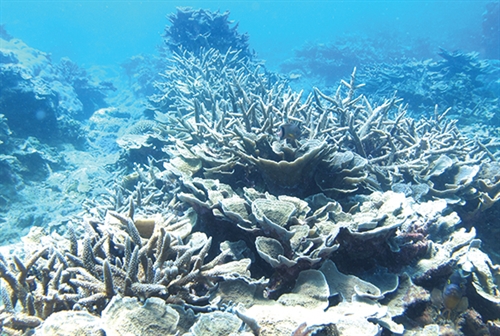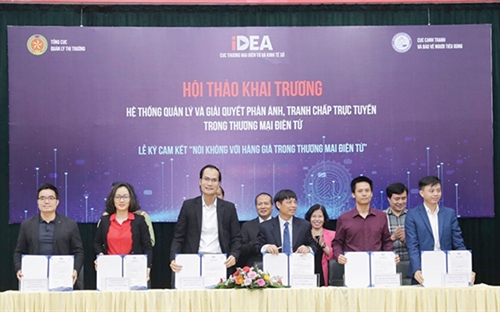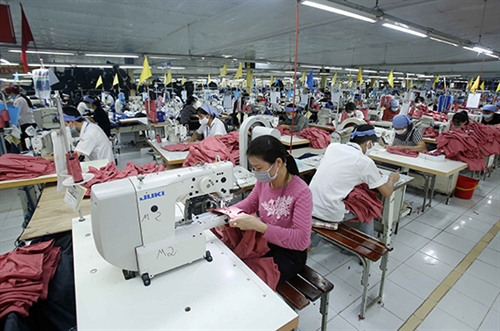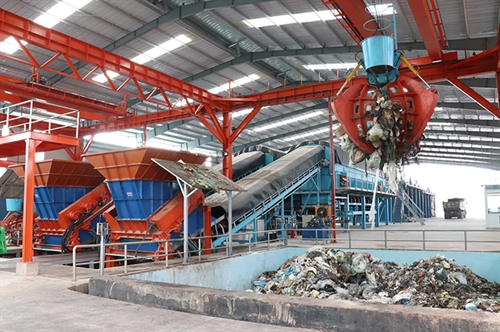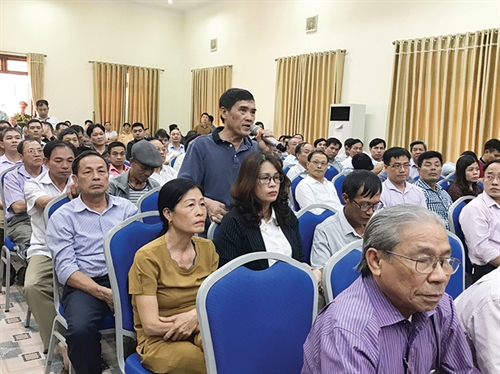Vietnam is amongst countries with high biodiversity in the world where the livelihoods of many people depend on the nature. Unfortunately, the existence of many wildlife species in the country is in danger. There are numerous reasons behind this sad situation and corruption is believed to be one of main causes as it promotes illegal wildlife trade and, therefore, threatens the survival and sustainability of wildlife species.
Assoc. Prof. Dr. Vu Cong Giao
Vietnam National University, Hanoi
Illegal wildlife trade and its relation to corruption
Illegal wildlife trade is defined as the illegal exchange and sale of wild animals, including live animals and products thereof. An act of illegal wildlife trade is often composed of many stages, such as hunting or capturing wild animals, processing wild animals into products, and transporting wild animals for consumption, and often involves the participation of many people as well as employment of various illegal methods, especially bribery, to bypass authorities. This is the key point of the relation between corruption and illegal wildlife trade. Many studies have shown that corruption is one of the main threats to wildlife protection, as it abets more serious illegal wildlife trade activities[1]. Not only small-scale corruption, a number of studies have identified high-level corruption cases, e.g., policy corruption or state corruption, which are related to illegal wildlife trade. It can be said that the relationship between corruption and illegal wildlife trade is very clear, manifested in the fact that illegal wildlife trade often thrives in places where corruption is rampant and governance is weak. Table 1 below demonstrated five types of corrupt behaviors related to illegal wildlife trade, each associated with a specific type of object[2].
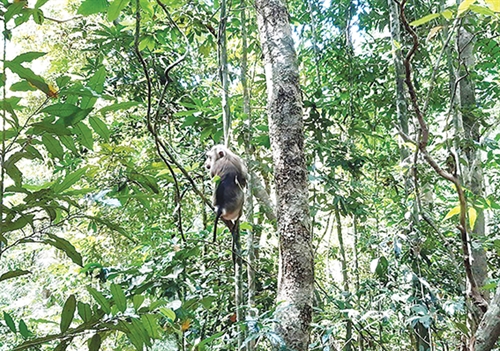 |
| A northern pig-tailed macaque after being released into the wild at Bu Gia Map national park, Binh Phuoc province__Photo: VNA |
Corruption leads to increase in illegal wildlife trade and, in the opposite direction, illegal wildlife trade worsens the situation of corruption, especially in the sectors of customs and border guards[3]. A study conducted recently by the Wildlife Conservation Society (WCS) in the northern province of Quang Ninh reveals the close collusion between a number of law enforcement officials and regulatory officials in border areas and illegal wildlife trade criminals, in which the amount of bribes mounted up to VND 306-720 million (USD 18,000-36,000) per day[4].
Table 1. Corrupt actors and acts in wildlife trafficking
| Corrupt Actors | ||||
| Private Sector | Employees of transportation companies and wildlife-related businesses and industries | |||
| Public Sector | Border guards, customs officers, forest officers, ranger officers, staff members of nature reserves, judicial officials and court personnel, legislators, staff members of national parks, policemen, politicians, prosecutors, and managers | |||
| Corrupt Acts | ||||
| - Bribery | - Diplomatic cover | - Ill-gotten permits | - Patronage | Threat of force |
| • To allow access to wildlife • To adopt weak legislation • To counterfeit wildlife-related permits • To present gifts to targeted subjects or groups of targeted subjects • To interfere in normal operations • To leak classified information (information on patrols, raids, etc.) • To impose lenient judgments • To mishandle evidence • Not to conduct investigations • Not to stop poaching • To divert patrols • To smuggle • To steal confiscated wildlife • To turn a blind eye on wildlife-related violations |
• To smuggle | • To misdeclare volume and/or value • To misidentify species • To mislabel captive bred for wild caught • To recycle legal permits • To sell import, export and/or hunting permits • To steal permits and/or CITES documentation |
• To allow access to wildlife • To adopt weak legislation • To counterfeit wildlife-related permits or grant permits in an unfair manner • To present gifts to individuals and groups • To interfere in normal operations • To leak classified information (information on patrols, raids) • To impose lenient sentences • To mishandle evidence • Not to conduct investigations • Not to stop poaching • To divert patrols • To smuggle • To steal confiscated wildlife • To turn a blind eye on wildlife-related violations |
• To allow access to wildlife • To extort wildlife-related permits from authorities • To turn a blind eye on wildlife-related violations |
Negative impacts of corruption on prevention and combat of illegal wildlife trade
The biggest and most direct consequence of corruption on prevention and combat of illegal wildlife trade lies in the fact that it undermines efforts to interrupt illegal wildlife trade, leaving many types of wild animals extinct or in danger of extinction. Therefore, anti-corruption in illegal wildlife trade is considered an extremely important factor to rescue wildlife species from the edge of extinction.
In Vietnam, the above-mentioned WCS’s study asserts that corruption in law enforcement agencies and border management forces can be seen the biggest threat to prevention of transnational crimes in general and illegal wildlife trade in particular. This study additionally shows that corruption and poor governance lead to strong development of organized-crime rings that run cross-border smuggling, including also wildlife smuggling and, at the same time, abet the exporters’ evasion of taxes and fees. Organized-crime rings also involve themselves in many other forms of crimes such as drug use, threat of force, money laundering, threatening authorities, bribery and murder, not only causing a loss to state budget revenues due to insufficient collection of administrative fees and fines but also creating a burden of payment for environmental, social and medical costs incurred by violations which are facilitated by corrupt officials.
Measures to prevent and combat illegal wildlife trade-related corruption
Firstly, the State should take measures to promote good governance. This is a measure of macro scale. The concept of “good governance” is understood as “...capable, timely, comprehensive and transparent management systems...”, expressed through basic factors such as accountability, transparency, effect and effectiveness, timeliness, vision, and rule of law. Thus, corruption in general and corruption in illegal wildlife trade in particular can be pushed back and eliminated if the principles of good governance are implemented since one of the core reasons of illegal wildlife trade is the weakness in governance. Specifically, all activities of corruption in illegal wildlife trade (see Table 1), especially bribery, patronage, diplomatic cover, and ill-gotten permits, will be exposed and punished in the context of the rule of law, publicity, transparency, accountability and public participation in state governance. Furthermore, in a well-governed society, any acts of illegal hunting, processing, transporting, and trading in wild animals will be easily detected and punished while remote prevention mechanisms such as social criticism over policies, regulations and laws of state agencies and mechanisms for protection of people who denounce acts of illegal wildlife trade and corruption related to illegal wildlife trade will be created.
Secondly, it is necessary to further improve and effectively implement relevant legal provisions. For the time being, Vietnam has issued a large number of regulations concerning prevention and combat of illegal wildlife trade and corruption related to illegal wildlife trade.
Regarding the prevention and combat of illegal wildlife trade, the 2008 Law on Biodiversity devotes a whole chapter, Chapter IV, to regulating the conservation and sustainable development of species, specifying species which are banned from exploitation or subject to conditional exploitation in the nature; the 2017 Law on Forestry prohibits all acts of illegal hunting, catching, caging, rearing, confining, killing, storing, transporting, and trading in forest animals and illegally collecting specimens of forest plants and animals; Government Decree 160/2013/ND-CP dated November 12, 2013, provides criteria for identifying, and management regimes applicable to, species on the list of endangered, precious and rare species prioritized for protection; Government Decree 06/2019/ND-CP of January 22, 2019, concretizes the management of endangered, precious and rare wild plants and animals under the Convention on International Trade in Endangered Species of Wild Fauna and Flora.
As for handling of wildlife-related violations, the 2015 Penal Code (revised in 2017) contains provisions on the offense of violating regulations on wildlife protection (Article 234) and the offense of violating regulations on protection of endangered, precious and rare animals (Article 244). Both of these articles stipulate the aggravating circumstance of “abusing positions and powers while on duty”. Additionally, illegal wildlife hunting may also be subject to administrative handling under Government Decree 155/2016/ND-CP of November 18, 2016, on sanctioning of administrative violations in the field of environmental protection; Government Decree 35/2019/ND-CP of April 25, 2019, on sanctioning of administrative violations in the field of forestry; and Government Decree 103/2013/ND-CP of September 12 2013, on sanctioning of administrative violations in fisheries activities.
However, the above-mentioned legal documents should be reviewed and revised in order to increase publicity, transparency and accountability in activities of related entities, especially those mentioned in Table 2 below, thus facilitating the detection and prevention of illegal wildlife trade and corrupt acts related thereto. Furthermore, it is necessary to take measures to improve the effectiveness of enforcement of legal documents, paying special attention to strengthening mechanisms for oversight operations of functional state agencies.
Table 2. Vietnamese wildlife protection and management authorities[5]
| Authority | Organizational structure | Responsibility relevant to wildlife trafficking | Risk of corruption |
| Forest protection |
To bee placed under the Ministry of Agriculture and Rural Development; and organized at central, regional, provincial and district levels and in national parks and nature reserves | Enforcing forestry law, monitoring all types of forests and carrying out preliminary investigations of forest-related violations, including wildlife trafficking | Bribery, patronage |
| Forest guards | To be employed by state-owned forestry enterprises | Directly protecting the forests owned by the enterprises | Bribery, patronage |
| Environmental police | To be placed under the Ministry of Public Security and organized at central, provincial and district levels | Preventing and combating wildlife trafficking and conducting preliminary investigations of wildlife trafficking cases | Bribery, patronage |
| Investigative police | To be placed under the Ministry of Public Security and organized at central, provincial and district levels | Conducting formal investigations of wildlife trafficking cases | Bribery, patronage |
| Customs | To be placed under the Ministry of Finance and organized at central and provincial levels | Monitoring the import and export of goods, including wildlife shipments | Bribery, patronage, ill-gotten or fraudulent paperwork |
| Border guard | To be placed under the Ministry of National Defense; and organized at central and provincial levels and in border posts; comprise also the maritime guard force | Controlling encroachments into Vietnam and preventing illegal border crossings, including wildlife-related activities | Bribery, patronage |
| Market surveillance | To be placed under the Ministry of Industry and Trade and organized at central, provincial, and district levels | Inspecting the domestic wildlife market, including restaurants selling wild animals | Bribery, patronage |
| CITES Management Authority |
To be placed under the Ministry of Agriculture and Rural Development and organized at the central level | Issuing all CITES import and export permits internally, issuing permits for wildlife farming and liaising with the CITES Secretariat and the CITES Parties externally | Bribery, patronage, ill-gotten or fraudulent paperwork |
Thirdly, law enforcement capacity should be enhanced. According to the International Criminal Police Organization (INTERPOL), the formulation of processes and building of capacity for law enforcement officers are absolutely crucial to prevent corruption in illegal wildlife trade. Corruption in illegal wildlife trade involves different agencies and entities in both public and private sectors. However, as mentioned in Table 2 above, the risk of corruption is higher in a number of law enforcement agencies, including forest protection, forest guard, customs, border guard, investigative police, environmental police, market surveillance, and CITES Management Authority. Therefore, the building of anti-corruption capacity in illegal wildlife trade should, first of all, focus on the staff of these agencies.
In order to improve the capacity of law enforcement officers, it is necessary to organize training courses on in-depth knowledge of wildlife management and protection and on prevention and combat of corruption in illegal wildlife trade, which are designed in conformity with the functions and tasks of each agency.
Fourthly, the salary regime applicable to law enforcement officers should be reformed so as to help them improve their living conditions. This is a solution no less important than strengthening monitoring mechanisms and raising publicity, transparency and accountability. Research outcomes show that corruption is more severe when salaries of law enforcement officers are low. In addition, it is necessary to work out a reward mechanism to motivate and encourage law enforcement officers to fulfill the tasks of illegal wildlife trade prevention and combat.
Fifthly, public employees and civil servants, especially those working in sectors highly prone to corruption, should be rotated.
Staff rotation is considered an important anti-corruption measure advised by international organizations. INTERPOL recommends that countries regularly rotate staffs of such sectors as forest ranger and customs from one place to another in order to prevent possible establishment of close relationship with local criminal gangs. Against the current backdrop in Vietnam, the agencies listed in Table 2 above should strictly comply with Section 4, Chapter II of the 2018 Anti-Corruption Law regarding staff rotation so as to prevent the risk of corruption in wildlife management and protection.
Sixthly, measures should be taken to reduce the demand for wildlife products. Obviously, if there is no demand for wildlife products, there will be no illegal wildlife trade and, consequently, no wildlife-related corrupt acts. So, in order to eradicate illegal wildlife trade and corruption in illegal wildlife trade, it is necessary to reduce and eventually eliminate demand for wildlife products.
To achieve the above goal, it is a need to educate and communicate to help people understand and give up the demand for wildlife products. This has been demonstrated in recent communication campaigns of the Humane Society International and other organizations in Vietnam. Survey results showed that the demand for rhino horn across the country may have decreased by more than a third, with the proportion of users accounting for only 2.6 percent of the population, and currently only 25 percent of Vietnamese believe that rhino horn has therapeutic value compared with the majority of people who held such belief in previous times.
Seventhly, people should be mobilized to participate in the prevention and control of illegal wildlife trade in particular and the fight against corruption in general. Hence, the first thing to do is to change their attitudes from indifference or acceptance to opposition and denunciation of corrupt acts in illegal wildlife trade. At the same time, existing legal mechanisms should be consolidated with a view to faciliate the denunciation of corrupt acts concerning illegal wildlife trade.
Lastly, attention should be focused on the prevention of illegal wildlife trade and corruption related to illegal wildlife trade in border areas. This can be done through such measures as[6]: (1) applying comprehensive monitoring measures to operations of law enforcement agencies and officers in the borders, detecting and preventing their collusion with transnational criminal gangs in illegal wildlife trade; severely punishing officers who receive bribes and making public information thereon to deter others; building a mechanism to reward people who denounce corruption acts; creating conditions for social organizations to independently monitor corruption in units in border areas and (2) strengthening law enforcement capacity for anti-smuggling units in border areas by: (i) improving the effectiveness of inter-agency patrol activities; (ii) applying advanced criminal investigation techniques to be able to arrest and handle crime rings and smuggling kingpins behind the carriers; (iii) building barriers on roads leading to illegal border trails; (iv) using X-ray scanners at clearance points; (v) establishing transparent inter-agency monitoring mechanisms; and (vi) providing annual training courses on wildlife-related crimes for law enforcement officers.-
